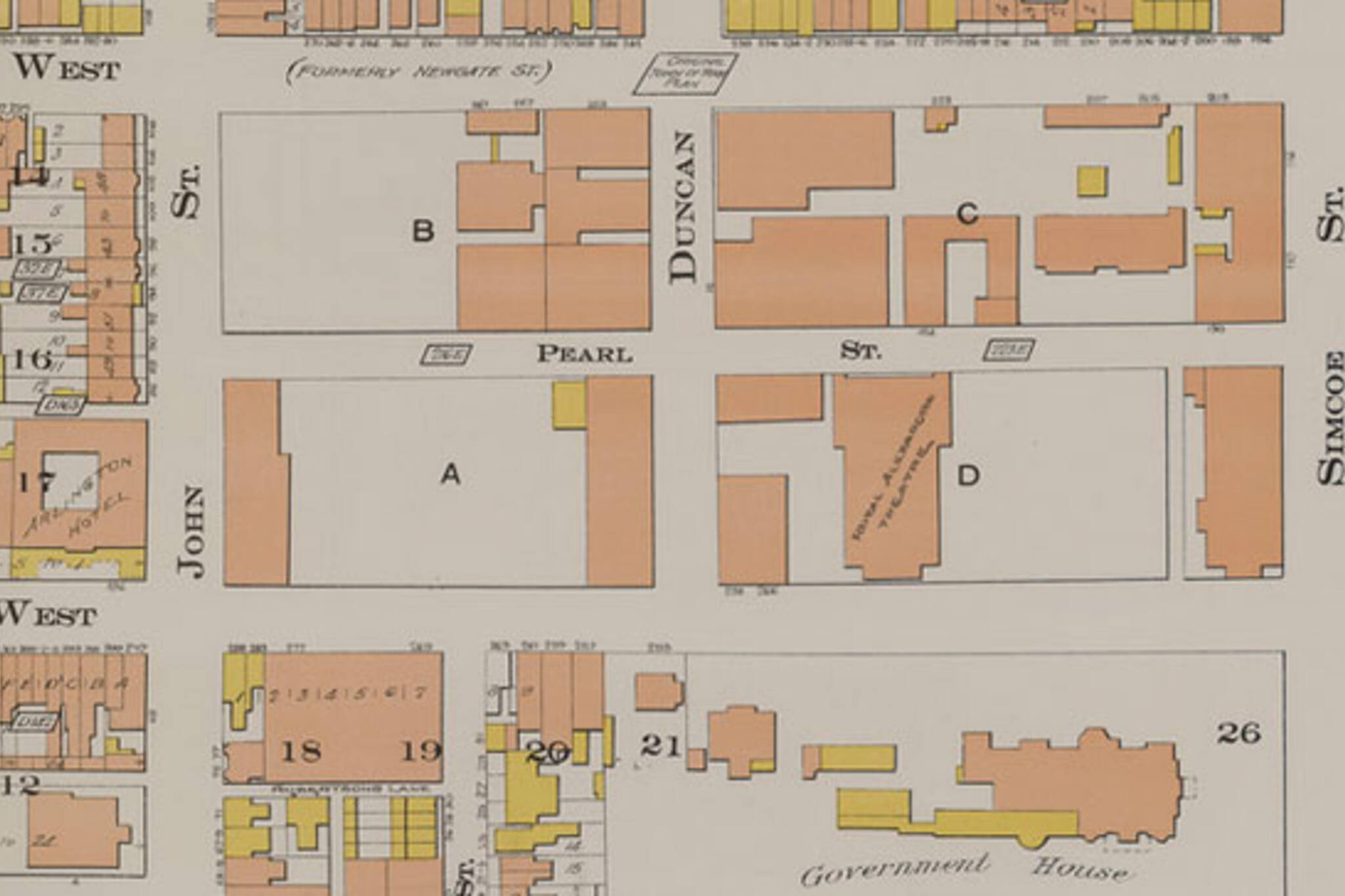
A brief history of the Princess of Wales Theatre block
In case you were under a rock this week, theatre promoter and owner of the Princess of Wales Theatre David Mirvish, and renowned Toronto-born architect Frank Gehry unveiled a striking design for three gigantic condo towers (OK, sorry David, three "sculptures") that will undoubtedly have a huge impact on the King West neighbourhood Mirvish's father Ed helped nurture.
The project calls for the demolition of several Mirvish Productions properties between the Royal Alexandra Theatre and John Street, including the Princess of Wales Theatre and several heritage warehouses on the north side of the street.
The utilitarian buildings are a relic of a time when King West was known more for manufacturing than movies and theatre. Before that, the area bounded by King, John, Adelaide and Simcoe streets was home to the original campus of Upper Canada College, a premier educational institution.
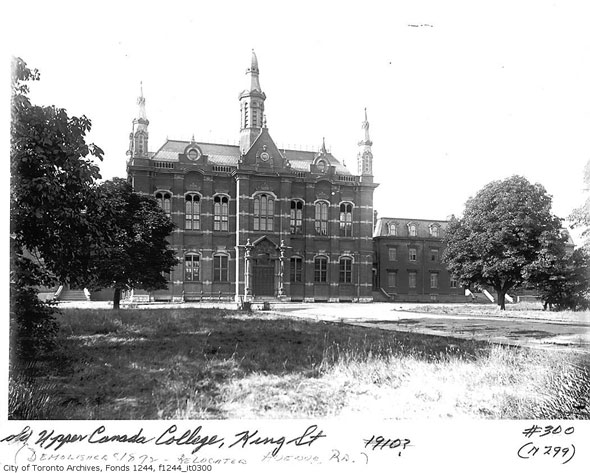
Upper Canada College was created in 1829 as a feeder school for the new King's College - now University of Toronto - in the image of elite private schools in the United Kingdom like Eton College and Harrow School, known for their high educational standards and even higher fees.
Known as Russell Square, the original location of the school comprised a playing field, gymnasium, and residence for the boys that boarded on the property. Many of the early students were part of Upper Canada College's cadet corps (basically child soldiers) that helped defend the country during the Fenian Raids, attacks from the U.S. side designed to force a British exit from Ireland.
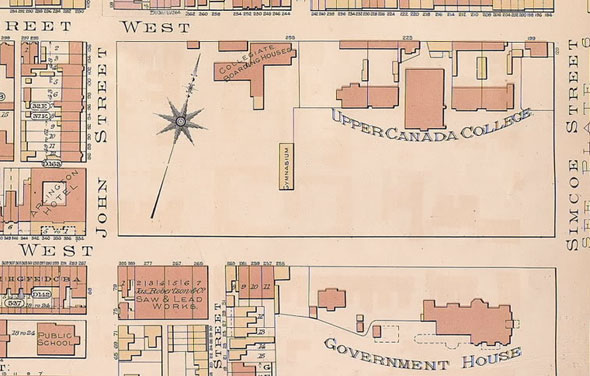
The school moved to its present location, then a rural area, in 1891, leaving its downtown property up for grabs. By 1910, Pearl Street was created parallel to Adelaide through the property, and Duncan Street extended south to meet King, creating four new city blocks and many new subdivisions.
After the great Toronto fire of 1904, many of the manufacturing companies that lost property around Bay and Front moved their operations to the Spadina area. At the corner of King and John, the Eclipse White Wear Company opened their underwear factory in 1903 to serve the intimate needs of Toronto's citizens. The bleak archival photo of the factory shows a sorry group of people huddled outside at a streetcar stop in the midst of a snowstorm. They must have been there a while - snow has gathered on many of their shoulders.
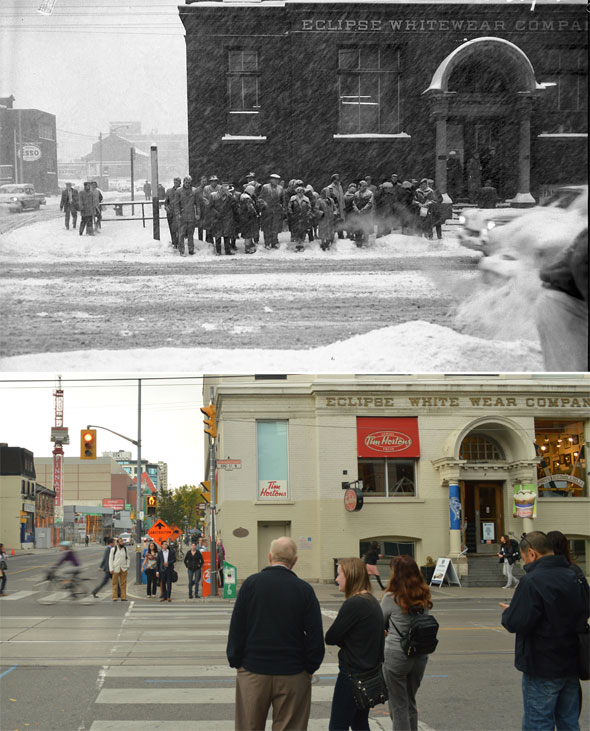
The building was later home to the Toronto Sun newspaper and is now probably most notable for the Tim Hortons outlet on the ground floor. The original company's name is still emblazoned over the entrance to the coffee shop - though at some point a space has been added to separate "White" and "Wear" - while a vehicular entrance to the underground parking lot beneath the Princess of Wales Theatre has been punched out of the John Street wall.
Heading east, the next property is the building at the focal point of the development - the 2,000-seater Princess of Wales Theatre. Sandwiched between the Eclipse Whitewear Company building and the Anderson Building, the main auditorium features a series of large ceiling murals painted by Italian-American artist Frank Stella that cover roughly 1,000 square metres.
Built on a vacant lot in 1991, the theatre was named for Diana, Princess of Wales, in 1993, despite the fact she had recently separated from Prince Charles. No privately funded and owned theatre had opened in Canada since the Royal Alexandra in 1907, also on King West, when the Princess of Wales project was announced. The first actors to tread the planks of the new stage in May 1992 were part of a local production of the wildly popular musical Miss Saigon.
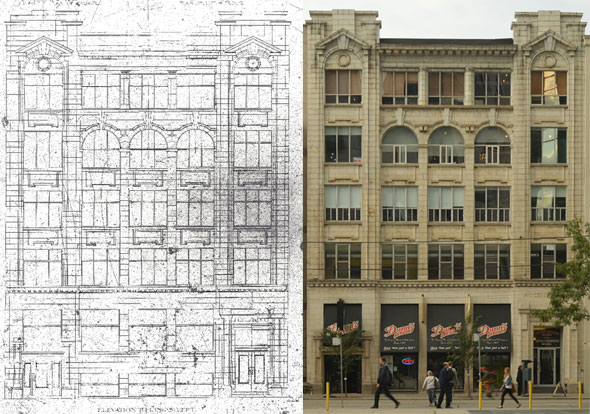
The five-storey, Edwardian classicist Anderson building to the east of the theatre stands on a plot of land acquired by the Anderson-Macbeth Company in 1914. By the end of the Second World War, the terra-cotta clad building with its ornate exterior and distinctive windows was occupied by the Phillips Electrical Works. It is now owned by Mirvish Productions and the ground floor is currently rented to Dunn's, a Montreal-style deli.
The building's architect, Scottish-born William Fraser, was also responsible for the Burns Memorial Cottage Homes in the village of Mauchline near Kilmarnock, Scotland, built to commemorate the centenary of the poet's death.
The former warehouses at the end of the block on the west side of Ed Mirvish Way (formerly Duncan Street) are collectively known as the Gillett Building. By far the most interesting part of the pair, the earliest part of the structure is slightly set back from the street and features a Tuscan-style portico. Also from the Edwardian classicism school, the 1901 portion originally housed the Pure Gold Manufacturing Company before the business moved to College Street.
Displaced by the great fire, the E. W. Gillett Company took over the premises for their baking supply business which produced Magic Baking Powder, Royal Yeast Cakes, and perfumed lye. Subsequent owners of the building included the Russell Motor Car Company and the James Morrison Brass Manufacturing Company, which added the less impressive western warehouse in 1942.
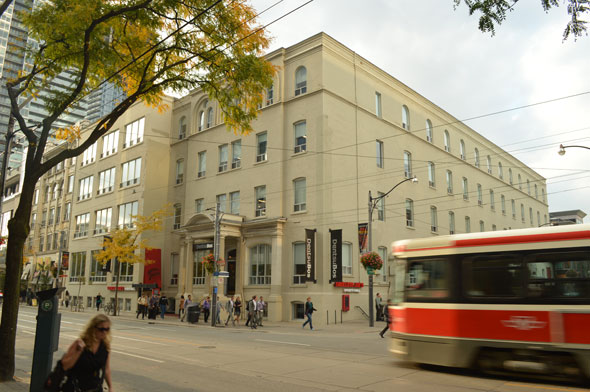
A short hop across Ed Mirvish Way stands the Reid Building, the last historic warehouse affected by the Mirvish-Gehry development. Named for the owner of the Featherbone Novelty Manufacturing Company - a tantalizing company we know little about - the Reid Building shares an architect (A. Frank Wickson) with the Gillett Building next door. Wickson is perhaps best known in Toronto for his contribution to the original Toronto Reference Library.
Built in phases over 1904, 1909, and 1913, the complex also includes additions to the east and north by Sproatt and Rolph, a partnership that also produced work for Hart House and Victoria University.
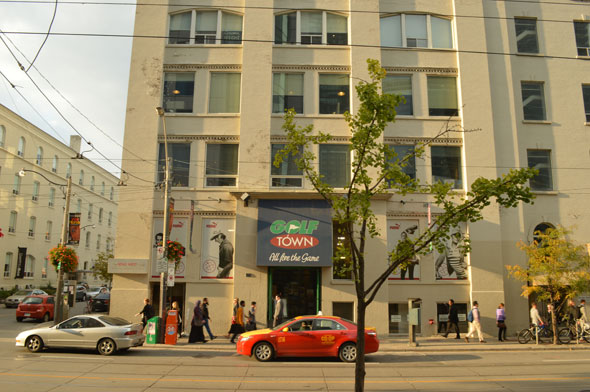
If allowed to proceed as planned, the Mirvish-Gehry development will erase these humble yet important historical buildings for good. Though we owe their recent preservation and renewed use to the Mirvish family it's ironic, or perhaps oddly fitting, that they could be the ones to herald the block's demise.
Catch King West as it once was while you still can.
MORE IMAGES:
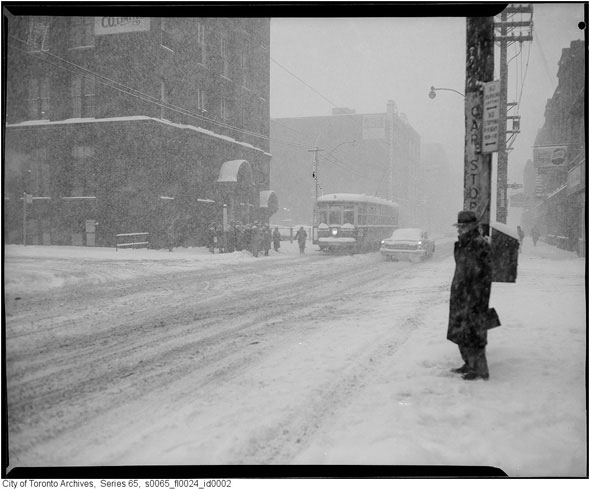
A snowy to the vacant lot that would eventually become home to the Princess of Wales Theatre
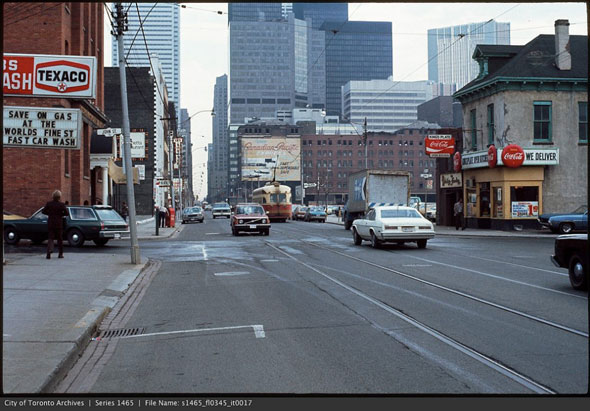
A sunnier but more oblique view of the block before the arrival of the theatre and Metro Hall
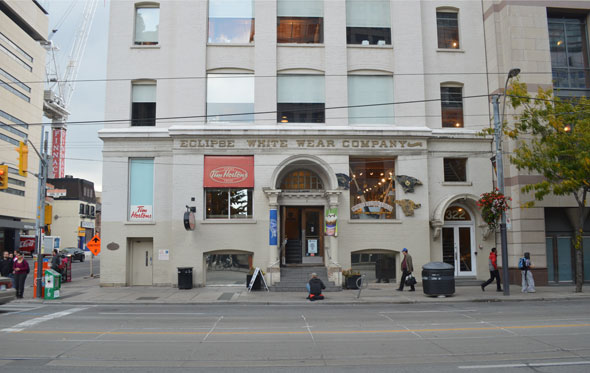
A full view of the Eclipse Whitewear Building
Images: The author, Library and Archives Canada, City of Toronto Archives
Latest Videos
Latest Videos
Join the conversation Load comments







